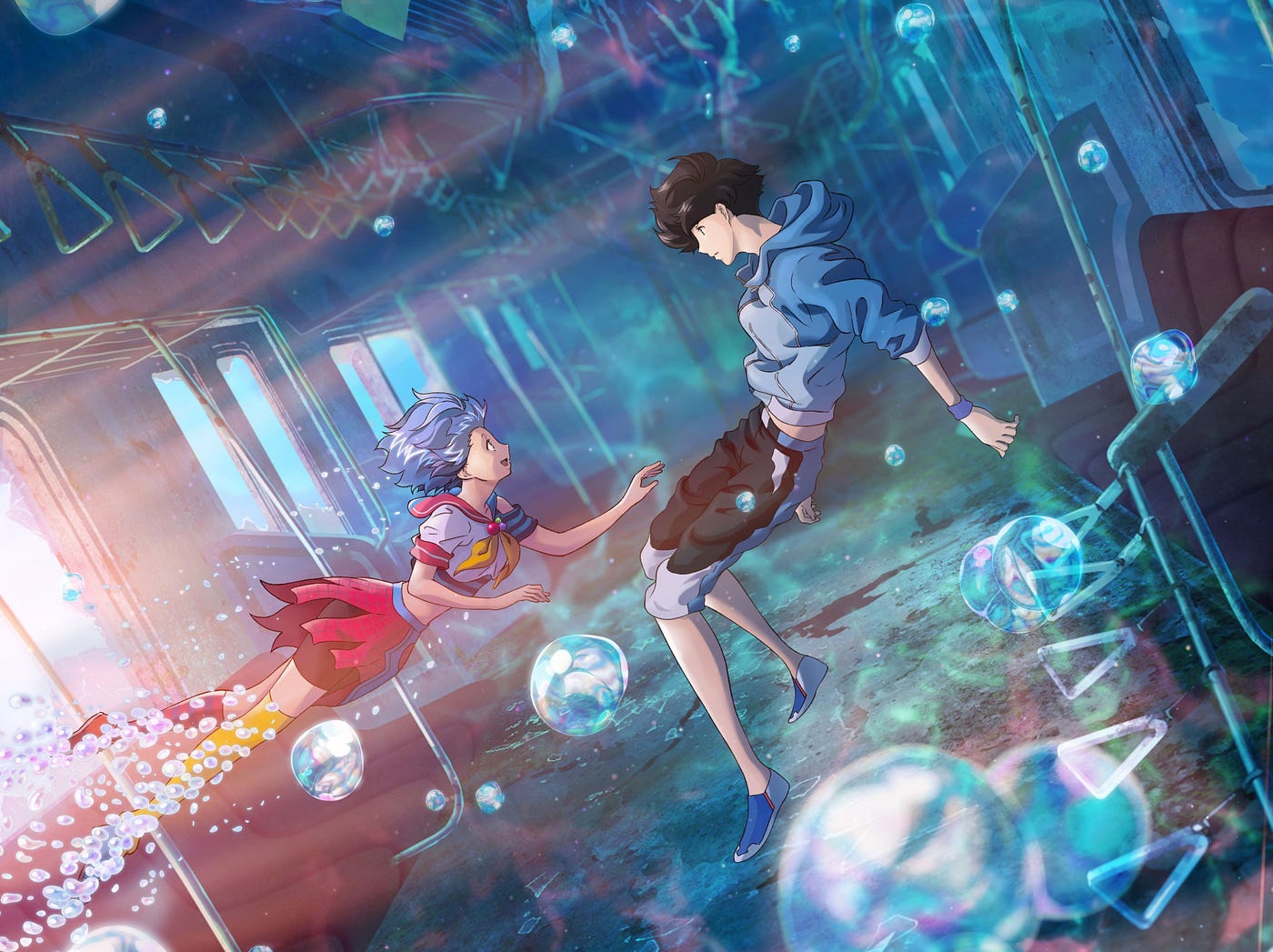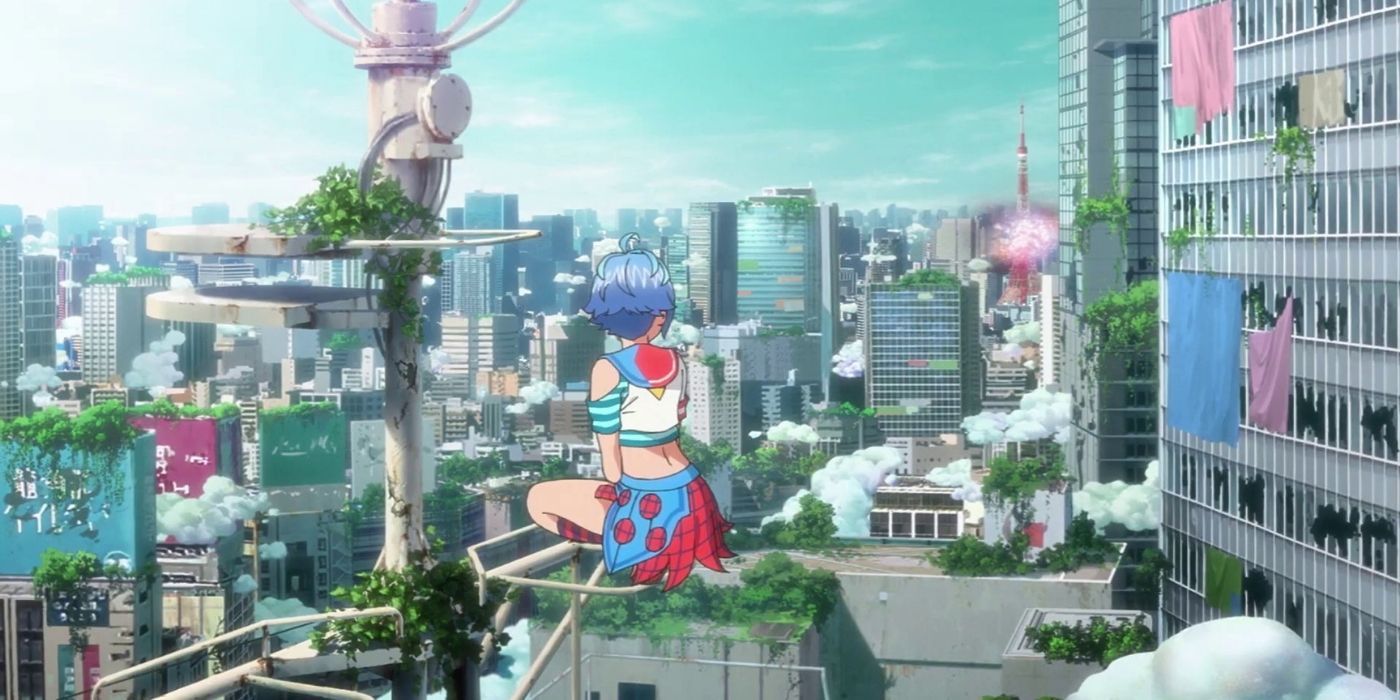I tend to be the type of person who finds themselves easily enticed by media with a strong sense of atmosphere and world-building. That’s not to say I don’t value stories with a more focused narrative or a heavy emphasis on character, but my love for simply being transported into another realm of being is enough for me to give things a try that don’t have the strongest reviews. Bubble is one of those films that, regardless of its 50% Rotten Tomatoes score, I just had to give a try and it’s a good thing I did. Despite its many flaws, underneath the surface of Bubble is an incredibly fun and emotionally fulfilling story that does a great job pairing cultural fears with the mythology of yesteryear, giving audiences a genuinely fresh take on the Little Mermaid archetype.

The film is set in a post-apocalyptic Tokyo, years after a strange event left the city submerged in the ocean and infested with bubbles that break the laws of gravity alongside everything they touch. The only people left inside the city are groups of young adults who run parkour contests to help advance research on the phenomenon, and the best of them is a boy named Hibiki. After one wrong move nearly sends him to his death, Hibiki is saved by Uta, a girl with intrinsic connections to both Hibiki and the bubble phenomena that changes the course of both their lives forever.
From the synopsis alone, it’s clear that this film is overflowing with ideas that barely fit into the film’s 100-minute runtime. It’s a film that wants to explore the cultural fears of flooding Japan faces on a daily basis but can’t decide how exactly it wants to go about doing so, with almost all of its avenues based completely on character arcs and relationships that aren’t satisfying in their resolutions as they barely had the time to be developed to begin with. However, this isn’t an end-all-be-all as the bones for these arcs remain omnipresent throughout the film, with its clear focus on telling a story through movement and purely visual storytelling.

Bubble is a beautiful film with some of the most exciting moments of action that have little to nothing to do with violence. Our main cast is seen flying through the wreckage of Tokyo, bouncing off one another’s personalities with a certain level of wit that solidifies the themes of emotional freedom and letting go of fear that the film partially evokes. For how little time they have together, the writing does a great job of pulling together and clearly establishing the Blue Blaze team that Hibiki is a member of through design and body language in a way that demands viewer attention.
Uta and Hibiki’s relationship is another example of this film hanging on the threads of its visual expertise, their love shown through body language and physical interactions more so than anything else in the film. The filmmakers put a lot of effort into the visual language of this film, and it goes so far beyond simply being pretty. It’s a masterclass in that aspect, with scenes in this film not only looking like paintings but able to say what’s never said about everything and everyone in this film.

Now, yes, while charming and robust, the film isn’t the best written and leaves a lot to be desired in terms of depth. The characters are so charming and intriguing that I wish this had the time in it to fully explore all of them, as most of the Blue Blazes get left to be nothing more than walking character archetypes with some moments to twinkle, never shine. However, if you love animation, there is still a great deal of fun to be had with this film. It’s original in many of its concepts, and although it sometimes feels like there are three movies playing simultaneously within this one, it’s still a super enjoyable flick if you go into it expecting a visual treat and an engaging, fast-paced time.











